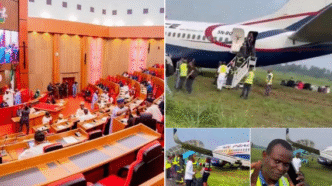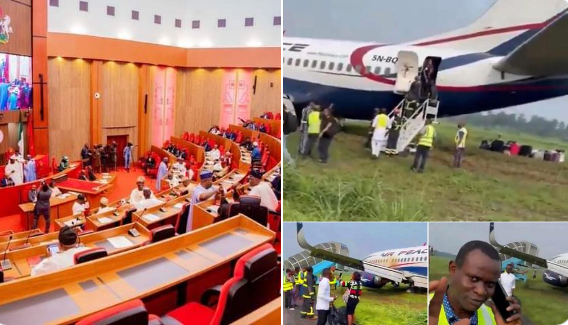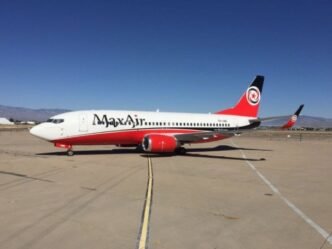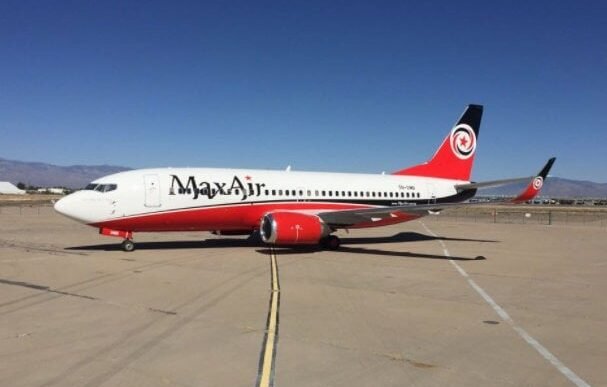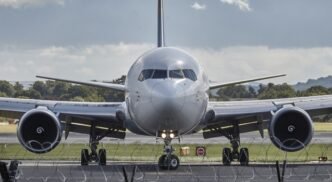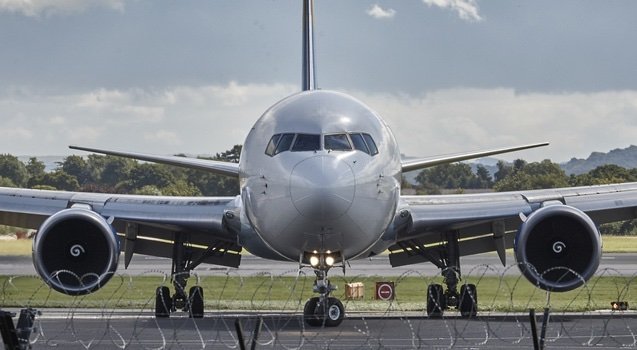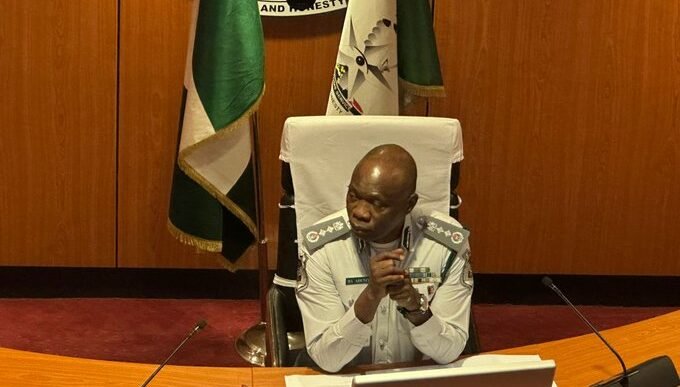JUST IN: Nigerian Senate Raises Alarm Over Growing Safety Lapses in Aviation Sector Following Air Peace Incident at Port Harcourt
In a rare show of urgency, the Nigerian Senate on Wednesday expressed deep concern over mounting safety lapses within Nigeria’s aviation sector, spotlighting a recent runway incident involving Air Peace at Port Harcourt International Airport (PHC). The Senate’s reaction follows a preliminary investigative report by the Nigerian Safety Investigation Bureau (NSIB) detailing alarming deficiencies — not only in airport infrastructure and regulatory oversight but in crew discipline and human-performance standards.
What Happened?
According to the NSIB’s preliminary findings, on 13 July 2025, an Air Peace Boeing 737-500 operating from Lagos to Port Harcourt (registration 5N-BQQ) landed long on Runway 21 in Port Harcourt after an unstabilised approach. The aircraft touched down approximately 2,264 metres from the runway threshold and came to rest about 209 metres into the clearway — well beyond prescribed safety zones.
While all 103 passengers and crew disembarked without injury, the incident triggered serious concerns. Toxicological screening revealed that both the captain and co-pilot tested positive for alcohol, and a cabin-crew member tested positive for THC, the psycho-active component of cannabis.
The NSIB report identified multiple contributing factors: a poorly managed final approach, late touchdown, runway condition and lighting deficiencies, human-performance issues (including substance use), and lapses in oversight by regulatory bodies.
Senate Response
During Wednesday’s plenary session, Senator Abdulfatai Buhari (APC-Oyo North) moved a motion underscoring that “aviation safety is not negotiable” after the NSIB disclosure.
The Senate adopted several urgent resolutions:
- The Committee on Aviation is tasked with carrying out a holistic investigation across the sector, engaging all relevant stakeholders — the NSIB, Nigerian Civil Aviation Authority (NCAA), Federal Airports Authority of Nigeria (FAAN), and airlines — and reporting back within six (6) weeks.
- The Federal Ministry of Aviation and Aerospace Development and FAAN are directed to immediately implement NSIB recommendations, prioritising runway rehabilitation, air-field lighting and modern navigation aids — beginning with Port Harcourt International Airport.
- The NCAA is urged to strengthen compliance monitoring, conduct routine safety audits, and enforce strict adherence to international standards by operators.
- The Senate also called for the construction of a second runway at Nnamdi Azikiwe International Airport (Abuja) to relieve pressure on the existing facility and enhance safety margins.
Senator Orji Uzor Kalu (APC-Abia North), during debate, raised the alarming spectre of substance abuse among flight crews, calling it a “deadly and growing threat” to aviation safety. He lamented that some pilots allegedly rely on external help or fly under the influence while the authorities “look the other way”.
Why This Matters
The incident at Port Harcourt is more than an isolated occurrence: it has exposed systemic vulnerabilities in Nigeria’s aviation sector at multiple levels — infrastructure, operations, human performance and regulation.
1. Infrastructure and Runway Safety
Runway integrity is foundational to safe operations. Landing long after an unstabilised approach substantially increases the risk of runway over-runs, incursions or other critical events. The Senate’s focus on runway condition, lighting and navigational aids acknowledges that even with competent crew and equipment, a deficient ground environment heightens risk.
2. Human Performance & Crew Fitness
The toxicology findings regarding alcohol and cannabis raise grave concerns. International aviation norms prohibit crew operation under the influence. A crew member’s impaired performance can undermine any safety-net built into aircraft systems, operational procedures and regulatory oversight. The NSIB pointedly recommended enhanced crew-resource-management (CRM) training and stricter fitness-for-duty monitoring.
3. Regulatory Oversight and Compliance Culture
Safety isn’t only about the airline or the runway; it’s about the ecosystem — regulators, maintenance organisations, airlines, and airports. The Senate’s motion flagged weak regulatory supervision and called for NCAA to step up audits and enforcement. The fact that such significant human-factor issues came to light only after a serious incident suggests gaps in proactive regulatory surveillance.
4. Public Confidence & Economic Implications
Beyond passenger safety, aviation is critical to Nigeria’s economy — connecting domestic markets, facilitating international business, tourism and cargo. A pattern of safety lapses erodes public trust and may affect investment, insurance costs and international perceptions of the Nigerian aviation industry. The Senate’s call reflects recognition that reputational risk is real.
The Broader Pattern
Although the Senate’s motion focused on the Air Peace incident, other recent occurrences suggest the problem may be more widespread. Nigerian airports have experienced multiple “skidding off” or runway excursion events this year, reinforcing concerns about infrastructure and operational risk.
In this context, the Senate’s decision to give its Aviation Committee a broad investigative remit is timely. It signals a willingness to not just react to singular events but to examine root causes across the aviation value-chain.
Responses from the Airline & Regulator
Air Peace, for its part, issued a statement in July shortly after the incident, noting that it had not yet received official communication from the NSIB more than a month after the event. It stressed its own “zero-tolerance” policy on drugs and alcohol, and said that the captain involved had been grounded for failing to adhere to CRM principles and disregarding the call for a go-around; the first-officer was cleared by the NCAA.
Meanwhile, the NCAA announced in September that its internal investigation, even taking the NSIB’s findings into account, did not find evidence to cancel the first-officer’s clearance to fly, because he had called for the go-around and was not found culpable.
These responses suggest a complex interplay: while infrastructure and procedure lapses are clear, the role of human factors and how they are policed remains contested. The full NSIB report (still pending) is likely to bring further clarity.
What Next?
As the Senate’s investigation moves forward, several actions will be critical:
- Quick Implementation of Infrastructure Fixes: Rehabilitation of runway surfaces, improved airfield lighting and modern navigation aids (especially at Port Harcourt) cannot wait six weeks or months. These are urgent safety imperatives.
- Strengthening Crew Fitness & Discipline Regime: Airlines must enhance random drug/alcohol screening, rigorous monitoring of crew health and fitness-for-duty, and robust CRM training that emphasises that the “go-around” is a valid safety action — not a failure.
- Regulatory Audit & Enforcement: The NCAA must shift from regulatory oversight into proactive assurance — unannounced audits, spotting trends of substance use or fatigue-related events, enforcing sanctions where necessary.
- Culture Change: Safety must be internalised at all levels — from airport ground staff, air-traffic-units, airlines, crews to regulators. Habitual short-cuts, ignoring procedures, or tolerating sub-standard infrastructure must end.
- Transparency & Accountability: The NSIB must publish its final report in full, and airlines and regulators should respond visibly. The Senate’s involvement raises the stakes: lack of visible corrective action will undermine credibility further.
- Public Assurance: The aviation-traveling public deserves to know what is being done. Clear communication of safety enhancements, audits and regulatory reforms will help restore confidence.
Conclusion
The Air Peace runway excursion at Port Harcourt has triggered a moment of reckoning for Nigerian aviation. While fortunate that no lives were lost, the incident has laid bare multiple fault-lines: infrastructure deficits, human-factor risks and weak oversight. The Nigerian Senate’s intervention signals that complacency will no longer suffice — and that sweeping reform, not just isolated fixes, is needed.
How fast and how thoroughly the various parts of the system respond now will define whether this becomes a turning point for aviation safety in Nigeria — or simply another headline in a recurring pattern.
For now, all eyes will be on the Senate Committee’s findings in the coming weeks, and on tangible action by the Federal Ministry, FAAN, NCAA and airlines to ensure that airports are safe, crews are fit and regulators are fully engaged. The safety of passengers and the reputation of Nigeria’s aviation industry depend on it.

